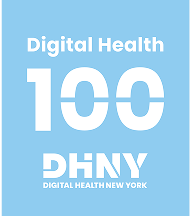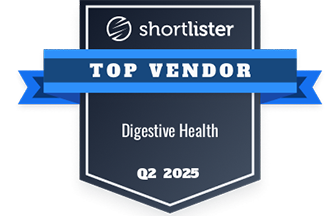
In part one, we explored how GLP-1 medications are transforming weight management—but also revealed that 86% of users experience GI side effects, with many discontinuing treatment due to these complications. Now we’ll examine how employers and health plans can support sustainable outcomes through integrated digestive health care.
Medically reviewed by: Dr. Dena Bravata, Dr. Hau Liu, Yael Horwitz
GLP-1 medications have reshaped the conversation around obesity and metabolic care. By helping people regulate appetite, improve blood sugar control, and improve cardiovascular outcomes, these therapies can be life-changing for the right patients. But they don’t come without challenges, especially when it comes to gastrointestinal (GI) side effects.
For many patients, these side effects aren’t just uncomfortable. They can derail adherence and increase ER visits and health care spending. And while many health plans and employers now have some form of GLP-1 or weight management program in place, few offer evidence-based solutions for managing the digestive health impacts that often accompany these treatments.
The overlooked problem in GLP-1 use
Cylinder internal research shows that 56% of its members starting GLP-1s already have GI symptoms, and for many, those symptoms worsen with treatment. Common side effects like nausea, constipation, diarrhea, and abdominal pain can make it hard to stay on the medication long enough to see material benefits.
A personalized approach to dosing and management strategies is crucial to ensure patient adherence and optimize treatment outcomes.
Where Cylinder fits in
Prescribing decisions are made by members’ providers, but Cylinder is built to collaborate closely with care teams and weight loss programs to close critical gaps—like managing GI side effects, reducing avoidable costs, and improving the member experience. Though GLP-1s are often in the spotlight for weight loss, alternative regimens may be more appropriate for some patients, especially those with a history of GI conditions or significant GLP-1-associated GI side effects. Cylinder helps members manage those side effects when they arise—or coordinate with partners to identify candidates who may benefit from alternative anti-obesity medications.
Cylinder’s clinically proven, tech-enabled platform connects members with a specialized care team trained in managing GI side effects from GLP-1s and other medications. This includes gastroenterologists, obesity-specialist MDs, GI-trained dietitians, health coaches, and care coordinators who address both pre-existing and treatment-related symptoms. As a result, only 6% of Cylinder members on GLP1-s report stopping their medication due to side effects—well below national averages.
Measurable outcomes for plans and employers
When digestive care is integrated into a GLP-1 strategy, the benefits go beyond comfort:
Higher rates of symptom resolution and associated improvements in medication adherence.
Reduced ER visits and unnecessary specialist referrals.
Lower medical and pharmacy costs—employers are seeing up to 18% reductions in Medical + Rx claims costs among GLP-1 users who also work with Cylinder.
A broader conversation about metabolic care
Not every patient tolerates or benefits from GLP-1 therapy. By keeping digestive health front and center, we can help care teams and members make informed decisions about when alternative or complementary approaches might be a better fit.
The goal isn’t just weight loss or metabolic improvement in the short term. It’s sustainable, whole-person health that lasts.
Interested in learning more?
Watch the recording of Optimizing GLP-1 outcomes with the right digestive health strategy, where clinical and industry experts shared the latest data, real-world insights, and practical steps for integrating GI care into your GLP-1 approach.







